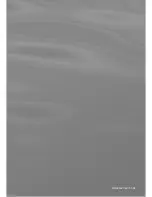
A
Anchorage
B
6’ Single-leg Self-Retracting Device
C
Walking/Working Surface
D
Swing Fall Impact After Fall Event
E
Next Lower Level or Obstruction
Figure 5 - Swing Fall Hazard
*A
Stretch
Stretch of Vertical Lifeline
Stretch = Length of the VLL from the
Anchorage Connector to Rope Grab
position on the VLL multiplied by 10%
B
3 ft
(0.9 m)
Length of Energy Absorbing Lanyard
Original working length before a fall
event occurs/before activation of
energy absorber
C
4 ft
(1.2 m)
Elongation/Deceleration Distance
Maximum allowable among of elonga
-
tion that may payout from the energy
absorber upon activation during a
fall event
D
1 1/2 ft
(0.5 m)
Harness Stretch and Dorsal D-Ring
Shift
Combined amount of harness web
-
bing elongation and dorsal back
D-Ring up-shift during entire fall event
E
5 ft
(1.5 m)
Height of Dorsal D-Ring
Typical average height of the dorsal
D-Ring on a user’s full body harness,
measured from the walking/working
surface up
F
1 1/2 ft
(0.5 m)
Safety Factor
Added length for other factors such as
an improperly adjusted harness, actu
-
al worker height or worker weight
*G
Add
A
through
F
Total Minimum Clear Fall Distance
Required
*
Must calculate the distance for A
1. Overhead Anchorage 2. Walking/Working Surface
3. Nearest Lower Level or Obstruction
Figure 6 - Managing Stretch
Minimum Clear Fall Requirement: Vertical Lifeline System
MFBH04 Rev A
121219
19
http://www.bestmaterials.com | 1-800-474-757
http://www.bestmaterials.com | 1-800-474-7570
[email protected] | http://www.bestmaterials.com | 1-800-474-7570
http://www.bestmaterials.com | 1-800-474-757
http://www.bestmaterials.com | 1-800-474-7570
[email protected] | http://www.bestmaterials.com | 1-800-474-7570






































